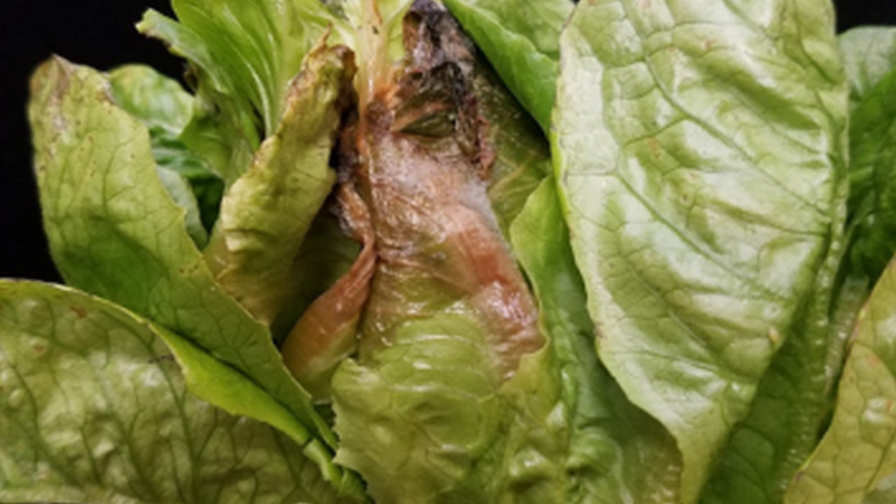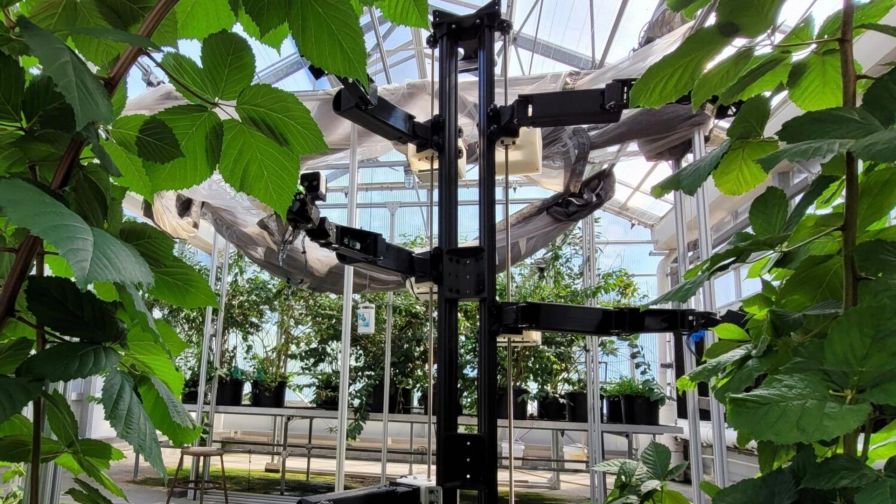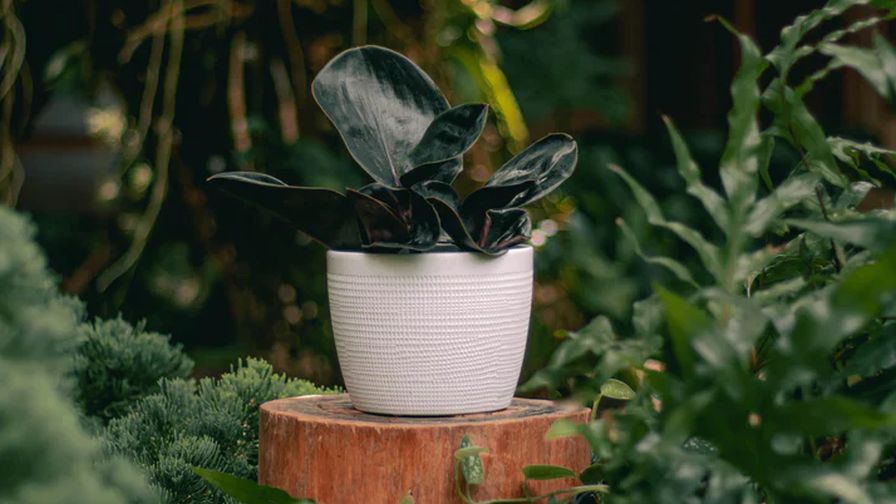Stop the Drop in Greenhouse Lettuce Production

Photo: University of Connecticut
Lettuce drop — caused by Sclerotinia sclerotiorum — is a plant disease that leads to a rapid collapse of the leaves. Sclerotinia sclerotiorum is a fungus that also causes crown and stem rot on a variety of crops. The disease has been reported in greenhouse and field production worldwide since the late 1800s. The first official report was from a greenhouse in Massachusetts in 1890.
According to a recent e-GRO Edible alert, lettuce in greenhouses may be commonly affected due to high humidity and density of the plants. The first visual symptoms of lettuce drop are wilting of leaves, light brown water-soaked lesions, and eventually white, cottony thread-like hyphae (mycelium). Symptoms usually appear on the lower stems or crown of the plant. However, symptoms may be detected on the top portion of the lettuce head in between the new shoots. This may be caused by overcrowding and bolting of the lettuce, which can create a humid microclimate right above and/or within the lettuce heads.
Once this organism is introduced into an operation, it can be difficult to manage because of its resilient structures called sclerotia. Sclerotia are tough, long-lived masses of mycelia that produce air-borne spores. These spores can infect the upper leaves and stems of neighboring and distant plants. Spore germination can occur within 48 hours in the presence of free moisture on leaves.
Spores usually infect damaged or aging tissue during cool and moist weather. In wetter conditions, they can persist for about three to four years in the absence of a host. Sclerotinia sclerotiorum has a pathogenic cousin named Sclerotinia minor that usually only infects the stems and leaves. A good trick to tell the two species apart is the size of the sclerotia. S. sclerotiorum forms sclerotia that are larger than those of S. minor. If you come across little pebble-like structures that resemble mustard seeds or tiny charcoal pieces, you are probably encountering S. sclerotiorum.
Learn more, including management tips, here.










